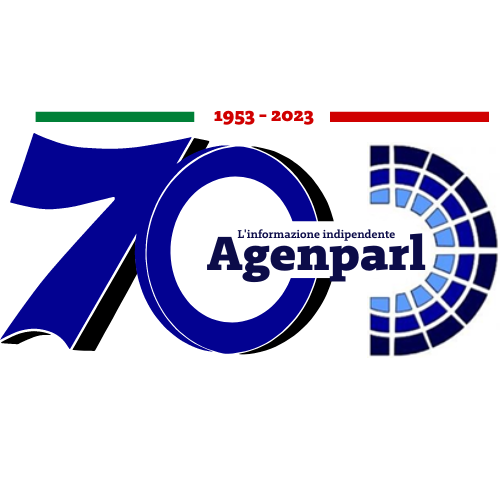 (AGENPARL) - Roma, 21 Febbraio 2025
(AGENPARL) - Roma, 21 Febbraio 2025(AGENPARL) – ven 21 febbraio 2025 A weekly compendium of media reports on science and technology achievements
at Lawrence Livermore National Laboratory. Though the Laboratory reviews
items for overall accuracy, the reporting organizations are responsible for
the content in the links below.
….. LLNL Report, Feb. 21, 2025
Research engineer Travis Massey led the fabrication efforts behind the
advanced implantable nose-computer interface. (Photo: Blaise Douros/LLNL)
… Sit. Shake. Now, smell.
https://www.wired.com/story/nose-computer-interface-dogs-detectors-canaery/
Thanks to their excellent smelling ability, dogs have been used for hundreds
of years to hunt down wild game and search for criminals. At airports, they
help identify explosives and illicit drugs. In disaster situations, they can
rescue survivors and find human remains.
But each dog can only be trained to detect one class of odor compounds, which
limits the range of smells it’s able to detect. Training costs tens of
thousands of dollars and takes several months. For Florida startup Canaery,
the solution is merging canines with neurotechnology to allow them to detect
everything from bombs and other contraband to human diseases and
environmental toxins — no specialized training needed.
The company has partnered with the Lawrence Livermore National Laboratory,
part of the US Department of Energy, to develop an array that reads odor
information taken from animals.
Read More
https://www.wired.com/story/nose-computer-interface-dogs-detectors-canaery/
LLNL models potential techniques for nudging asteroids away from Earthbound
courses..
… Small chance, big impact
Astronomers on Tuesday said that the asteroid designated 2024 YR4 had become
the most likely sizable space rock ever forecast to impact planet Earth. The
object, first detected in December, is 130 to 300 feet long and expected to
make a very close pass of the planet in 2032. Its odds of impacting Earth on
Dec. 22 of that year currently stand at 3.1 percent.
If 2024 YR4 is stony and on the smaller end of estimates — 130 feet — the
odds of an airburst are high, said Kathryn Kumamoto, the head of the
planetary defense program at the Lawrence Livermore National Laboratory..
“The main comparison point we have for a stony asteroid impact of this
magnitude is Tunguska,” Dr. Kumamoto said. The Tunguska event of 1908
involved an asteroid similar in size to 2024 YR4 exploding above a sparsely
populated part of Siberia. It generated a blast wave of roughly 12 megatons,
not unlike that of a nuclear weapon, that destroyed a forest more than twice
the size of New York City.
Read More
Technologist assembling part of Scorpius, an electron beam accelerator that
will capture multiple X-ray images of dynamic explosive experiments.
… Nuclear experimentation without detonation
The U.S. tested nuclear weapons until the early 1990s. Since then, scientists
have been using supercomputers and experiments to simulate nuclear test
detonations, without detonating any nukes. But there are signs the world’s
nuclear powers may be readying to test again: Russia, China and the U.S. are
all upgrading their nuclear test sites.
NPR science correspondent Geoff Brumfiel was among a small group of
journalists allowed to tour where this research happens. His first stop:
Lawrence Livermore National Laboratory’s El Capitan.
Read More
Lead electrical engineer Collin Averill, electrical engineer Richinder Rehal
and flight software engineer Lance Simms work on flight hardware in the lab.
(Photo: Garry McLeod/LLNL)
… Pandora preparing for launch
NASA has announced that its newest exoplanet mission Pandora is one step
closer to launch with the completion of the spacecraft bus, which provides
the structure, power, and other systems that will enable the mission to carry
out its work.
“This is a huge milestone for us and keeps us on track for a launch in the
fall,” said Elisa Quintana, Pandora’s principal investigator at NASA’s
Goddard Space Flight Center. “The bus holds our instruments and handles
navigation, data acquisition, and communication with Earth — it’s the
brains of the spacecraft.”
Pandora, a joint effort between Lawrence Livermore National Laboratory in
California and NASA Goddard, is a small satellite that will undertake a
detailed study of at least 20 known planets orbiting distant stars in order
to determine the composition of their atmospheres — especially the presence
of hazes, clouds, and water. This data will establish a firm foundation for
interpreting measurements by the space agency’s James Webb Space Telescope
(JWST) and future missions that will search for habitable worlds.
Read More
A NIF fusion target contains a polished capsule about two millimeters in
diameter, filled with super-cooled hydrogen fuel.
… Fusion collaboration on target
https://www.independentnews.com/news/livermore_news/lab-and-startup-company-team-up-on-fusion-materials/article_5c261924-e979-11ef-bcc7-a77d14ae21ff.html
Commercial fusion technology — what the U.S. Department of Energy (DOE)
says could deliver “a supply of safe, clean and relatively limitless
energy” — took another step forward last week with the announcement of a
new joint project between the Lawrence Livermore National Laboratory and
fusion startup Focused Energy.
The year-long project, funded through the DOE’s Innovation Network for
Fusion Energy program, will explore the use of wetted foam to hold liquid
fuel within the pellets used in fusion reactions.
Specifically, the lab (LLNL) will run computationally intense 3D modeling of
how the foam reacts to the laser shots the lab uses to initiate fusion. The
results can then be applied in later, cheaper models that look at the effects
of impurities within the foam, said LLNL physicist Elijah Kemp. The results
will also be published in scientific journals.
Read More
https://www.independentnews.com/news/livermore_news/lab-and-startup-company-team-up-on-fusion-materials/article_5c261924-e979-11ef-bcc7-a77d14ae21ff.html
——————————————————————————
Founded in 1952, Lawrence Livermore National Laboratory https://www.llnl.gov
provides solutions to our nation’s most important national security
challenges through innovative science, engineering and technology. Lawrence
Livermore National Laboratory is managed by Lawrence Livermore National
Security, LLC for the U.S. Department of Energy’s National Nuclear Security
Administration.
Read previous Lab Report articles online https://www.llnl.gov/news/lab-report
— Unsubscribe from this newsletter :
